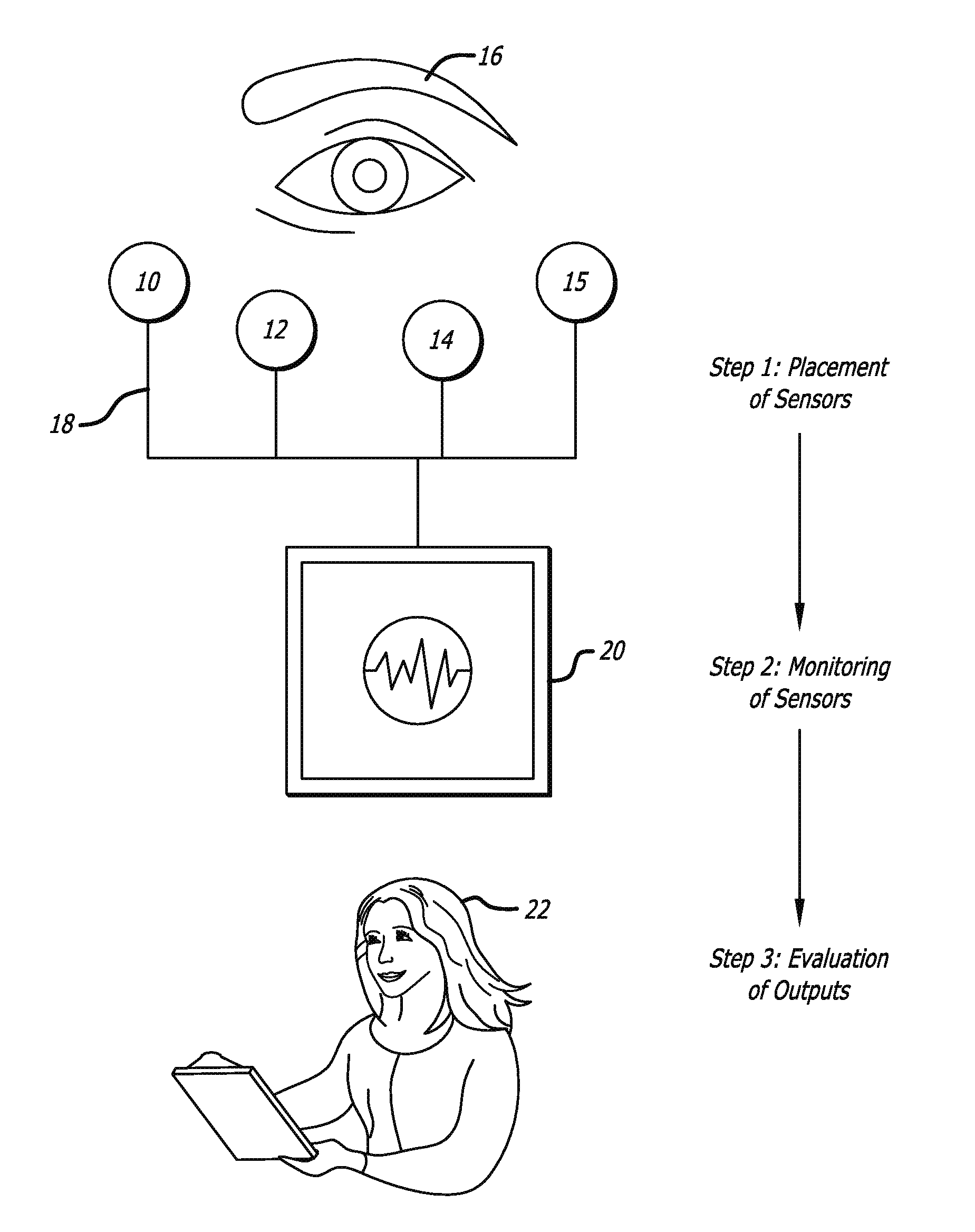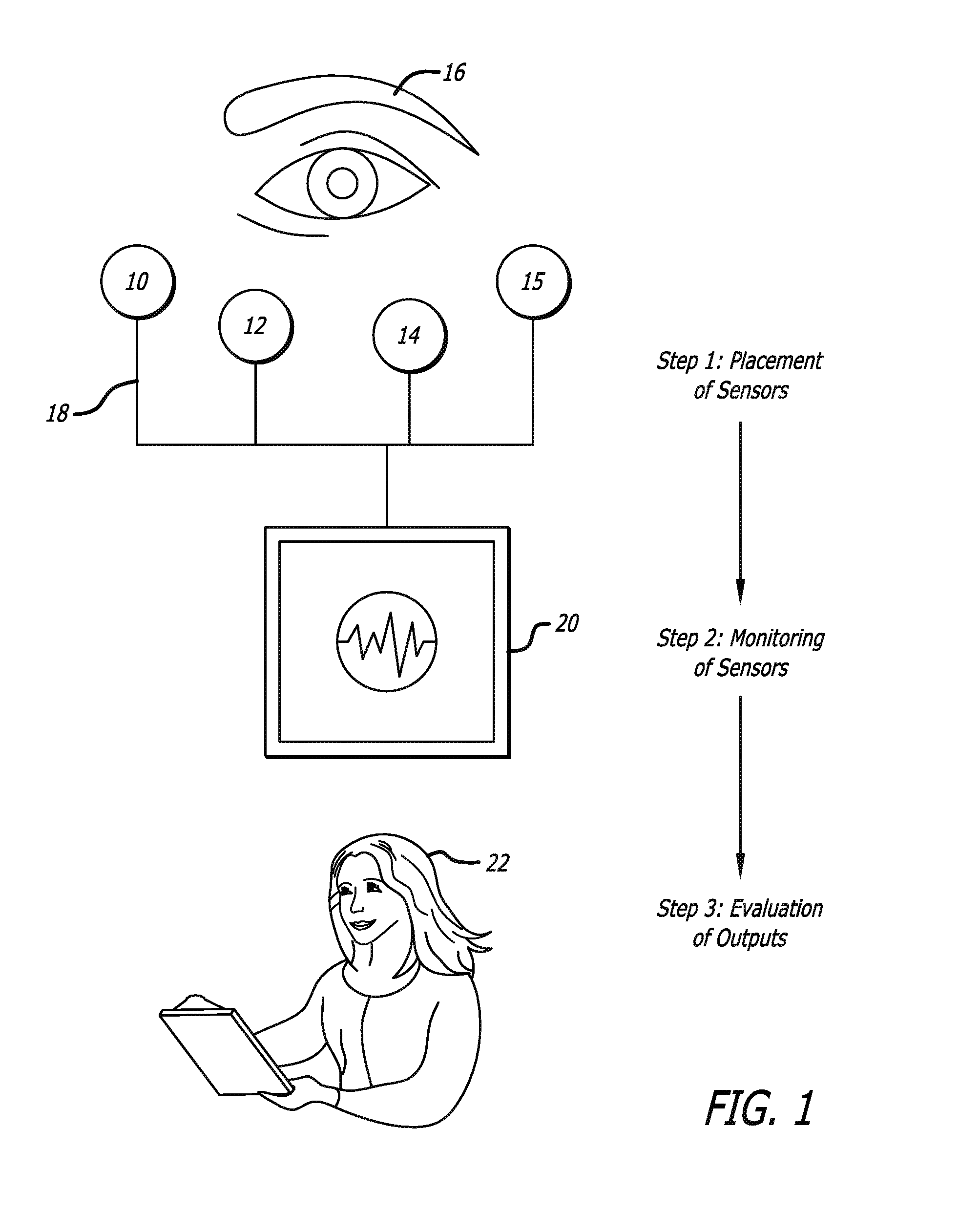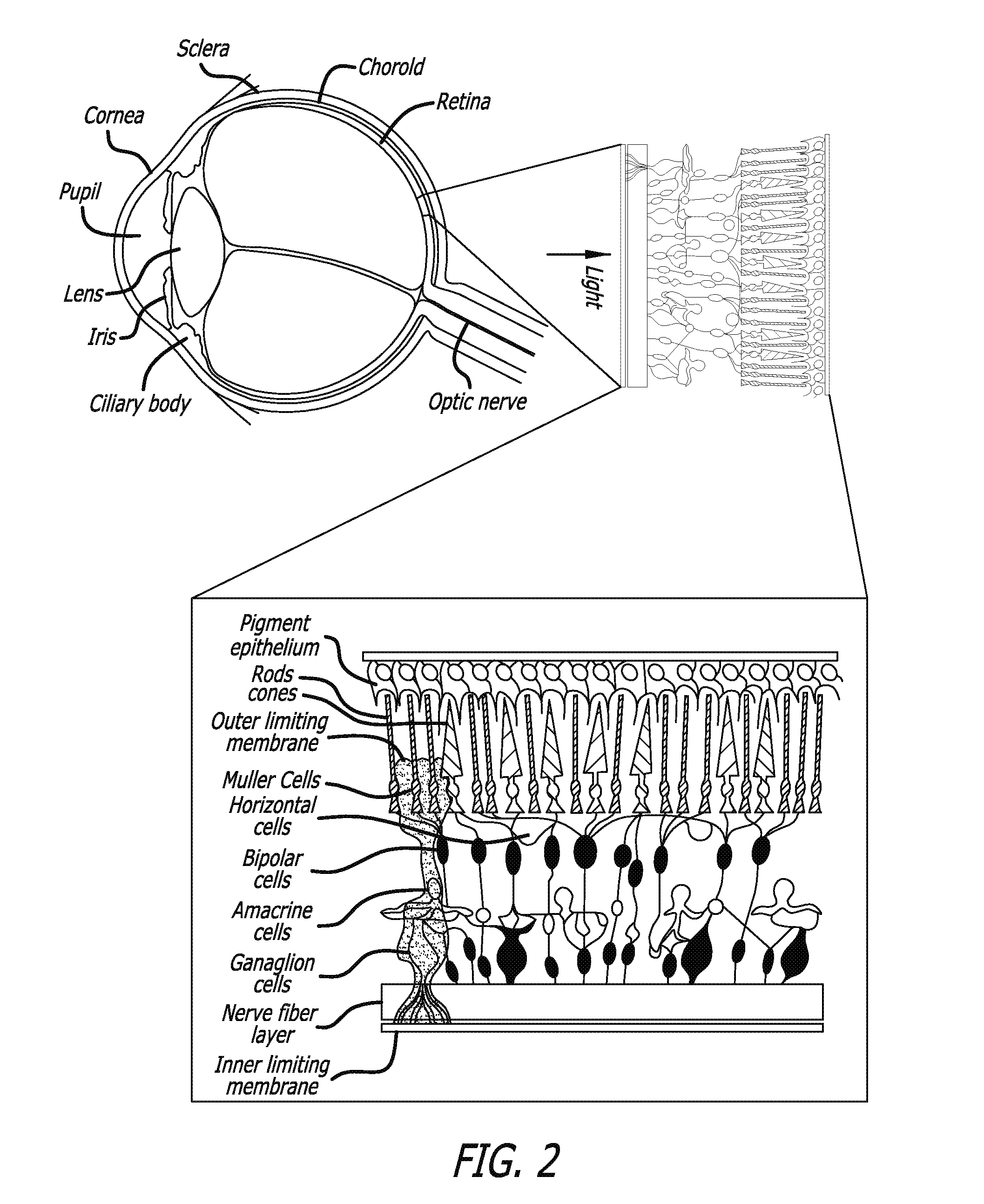Optic function monitoring process and apparatus
a technology of optic function and process, applied in the field of optic function monitoring, can solve the problems of narcotic anesthesia agents, process is fraught with danger, and almost causes him to leave medical school
- Summary
- Abstract
- Description
- Claims
- Application Information
AI Technical Summary
Benefits of technology
Problems solved by technology
Method used
Image
Examples
example 1
Post-Operative Visual Loss (POVL)
[0097]Post Operative Visual Loss (POVL) is a broad term that is often discussed as a single condition; however, there are actually a number of conditions that fall within this broad definition, including, for example, posterior ischemic optic neuropathy (PION), anterior ischemic optic neuropathy (AION), and central retinal artery occlusion (CRAO). Currently there is a great deal of dispute as to what factors play a role in causing POVL. As a result, there is no known methodology for monitoring and preventing POVL in real-time. Before providing a description of how the apparatus / method of the current invention may be used to monitor, diagnose and potentially prevent POVL, it is important to understand the spectrum of disorders that fall within this broad classification.
[0098]Corneal Abrasion and Scleral Injury
[0099]Corneal abrasion is the most common surgical and general anesthesia-related eye complication. (See, e.g., Batra Y. K., et al., Anesthesia ...
example 2
Anesthesia Awareness
[0174]Anesthesia awareness, or “unintended intra-operative awareness” occurs during general anesthesia, when a patient has not had enough general anesthetic or analgesic to prevent consciousness. There are two states of consciousness that may be present:[0175]Awareness. When patients seem to be vigilant and cognizant responding to commands but with no postoperative recall or memory of the events.[0176]Memorization and recall. When patients can recall events postoperatively but were not necessarily conscious enough for responding to commands.
[0177]The most traumatic case of anesthesia awareness is full consciousness during surgery with pain and explicit recall of intraoperative events. In less severe cases, patients may have only poor recollection of conversations, events, pain, pressure or of difficulty in breathing. The experiences of patients with anesthesia awareness vary widely, and patient responses and sequelae vary widely as well. This experience may be ex...
example 3
VEP Curve Analysis
[0182]In another embodiment of the invention, a more sophisticated measurement of optic nerve function is proposed. In this embodiment, not only the peaks, but the entire waveform of the VEP of the patient is analyzed in accordance with novel techniques to determine subtle shifts in the function of the optic nerve, and by proxy the awareness level or risk of POVL of the patient. This technique will be discussed in reference to FIG. 12, which provides a plot of a normal flash VEP.
[0183]In prior art studies that have used VEPs to examine the effects of anesthesia on a patient only the location and size of peaks has been examined. (See, e.g., Freye, E., Cerebral Monitoring In The Operating Room And The Intensive Care Unit, reprinted from J. Clinical Monitoring and Computing, 9:1-2 (2005), the disclosure of which is incorporated herein by reference.) However, as shown in FIG. 12, a VEP curve can be broken into many different parts, all of which are defined below.[0184]...
PUM
 Login to View More
Login to View More Abstract
Description
Claims
Application Information
 Login to View More
Login to View More - R&D
- Intellectual Property
- Life Sciences
- Materials
- Tech Scout
- Unparalleled Data Quality
- Higher Quality Content
- 60% Fewer Hallucinations
Browse by: Latest US Patents, China's latest patents, Technical Efficacy Thesaurus, Application Domain, Technology Topic, Popular Technical Reports.
© 2025 PatSnap. All rights reserved.Legal|Privacy policy|Modern Slavery Act Transparency Statement|Sitemap|About US| Contact US: help@patsnap.com



